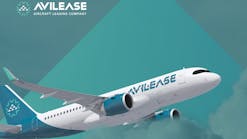FAA Runway Safety Quiz
Runway Safety Quiz from FAA's Airport Ground Vehicle Operations publication.By Michelle Garetson/p>
By FAA
October 2002
This quiz, taken from the FAA's Airport Ground Vehicle Operations publication, tests your knowledge of rules, signs, and aviation phraseology. The quiz is not difficult but if you need a refresher, this guide is free from the FAA. Visit the FAA's Runway Safety website at www.faarsp.org to order your copy or call the Office of Runway Safety at (202) 385-4800. Answers are printed at the end of the article.
1. A controller who says "go ahead" means:
- Proceed as requested.
- Continue straight ahead.
- State your message.
2. The red and white sign next to the taxiway is called a runway hold position sign. If you are next to this sign, it means:
- That you are about to go onto the protected area next to the runway.
- That you should follow the sign to get to the parking apron.
- Nothing to me, it's only there for the pilot's use.
3. Two solid yellow stripes followed by two broken yellow stripes is the marking for a runway hold line. A hold line means:
- All aircraft must stop and be cleared before going onto the runway.
- Everyone, including vehicles, must stop unless authorized to proceed onto the runway.
- That you are about to go next to some electronic signal equipment.
4. Runway markings are:
- White.
- Yellow.
- Red.
5. Taxiway markings are:
- White.
- Yellow.
- Red.
6. A "controlled" airport is one that has an operating airport traffic control tower.
- True
- False
7. FOD is caused by:
- Bad weather conditions.
- The airport manager.
- Trash and debris.
8. If I have to cross a runway, I should try to do so:
- At the end.
- In the middle.
- Wherever I want.
9. If the air traffic controller signals me with a flashing red light, I should:
- Stop.
- Clear the runway or taxiway.
- Ignore the signal as it is for aircraft only.
10. If the air traffic controller signals me with a steady red light, I should:
- Stop.
- Clear the runway or taxiway.
- Ignore the signal as it is for aircraft only.
11. Traffic patterns are used at controlled airports (those with towers) only.
- True
- False
12. When driving in the area immediately behind a large jet aircraft with its engines running, a driver should:
- Not be concerned about danger from the jet blast because a typical car/van is too heavy to be affected.
- Stop or stay well back and not proceed behind the aircraft until air traffic control has confirmed the aircraft is at idle power.
- Cross the area of jet blast at a perpendicular angle to minimize the hazard.
13. Unless contrary instructions have been received from air traffic control, a vehicle should always yield to an aircraft.
- True
- False
14. If, at a non-towered airport, you see an aircraft approaching the runway to land when you are waiting to cross the same runway, you should:
- Hold short of the runway until the aircraft is past the point at which you will cross the runway then proceed when it is safe.
- Proceed across if the aircraft has not announced its position on the UNICOM frequency.
- Contact the pilot by radio and see if he or she intends to make a touch and go landing.
- Flash your headlights at the aircraft.
15. An aircraft that has announced its position on the UNICOM frequency as "downwind" at the non-towered airport on which you are driving, is flying:
- Perpendicular to the runway after initial climb and turn.
- Parallel to the runway in the direction opposite landing.
- An approach to land with the wind instead of into the wind.
- Too fast to spot until the aircraft slows down to land.
16. If a controller gives you permission to do something which appears unsafe:
- You must comply or face disciplinary action.
- You should comply and then call your supervisor as soon as practicable.
- You should tell the controller your concerns and get clarification before proceeding.
- Flash your headlights and proceed.
17. Aircraft usually land and takeoff:
- Into the wind.
- With the wind at their back.
18. An aircraft that has announced its position as "short final" is:
- Nearing the runway threshold for landing.
- About to make the last landing for the day.
- Well outside of the airport traffic pattern.
19. A touch and go landing involves:
- A landing without bouncing.
- A landing followed by immediate application of power to takeoff again without bringing the aircraft to a stop.
- A lot of skill.
- Aircraft flying in formation.
20. Which of the following will make driving on an airport more difficult?
- Snow and ice.
- Night driving.
- Congested ATC frequencies.
- All of the above.
21. An aircraft that has announced its position on the UNICOM frequency as "base leg" at the non-towered airport on which you are driving, is flying:
- Perpendicular to the runway after initial climb and turn.
- Parallel to the runway in the direction opposite landing.
- Perpendicular to the runway about to turn final and land.
- With a pilot at the controls whose foot is asleep.




